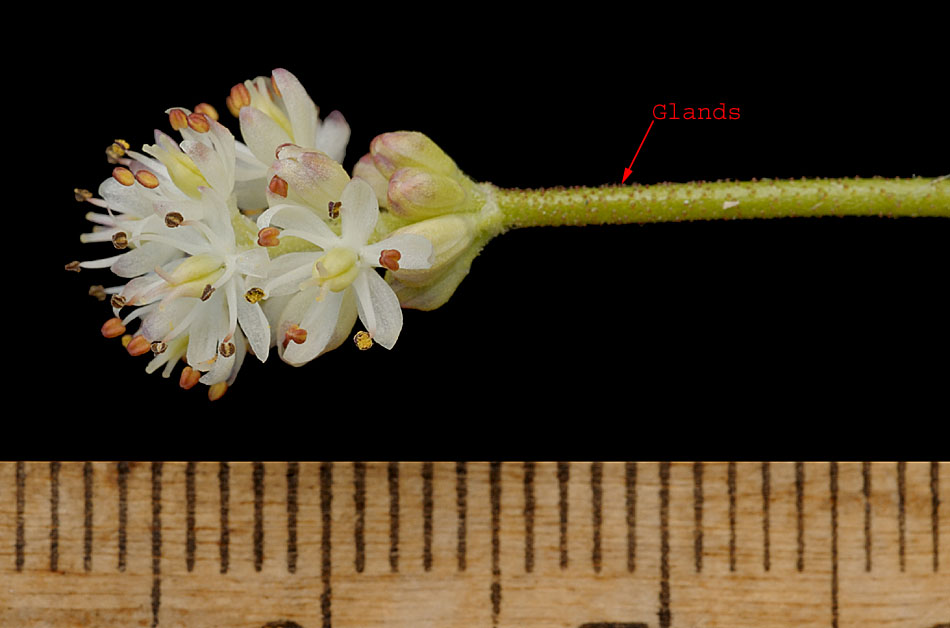 |
Triantha: Answers to key questions
leading to this genus, from Lilies, Irises & Orchids of Saskatchewan
by Vernon L. Harms and Anna L. Leighton. The answers are in the order
you would normally work through the key.
 |
Flowers terminal, either single or
grouped in an umbel, raceme or panicle. NOT [Flowers axillary,
suspended on delicate stalks from leaf axils, either singly or in
few-flowered clusters (leaves small and scale-like in Asparagus).] |
 |
Flowers several-to-many in an umbel,
raceme or panicle. NOT [Flowers single (occasionally Hypoxis has a
single flower but it is unique in having an inferior ovary).] |
 |
Inflorescence a raceme or panicle. NOT
[Inflorescence an umbel.] |
 |
Leaves basal or subbasal; blades narrow,
grass-like; fruit a capsule. NOT [Leaves cauline, sessile or nearly so;
blades lanceolate, elliptic or ovate; fruit a berry.] |
 |
Plants with rhizomes; inflorescence
compact, 3-35 flowered and less than 6.5 cm long; tepals 1-5 mm long,
lacking nectar gland on upper surface. NOT [Plants with bulbs or corms;
inflorescence open, 1 to many-flowered and 2-25 cm long; tepals usually
longer, bearing an obovate to semi-circular nectar gland at base on
upper side.] |
 |
Plants to 50 cm high; stems sticky due to
presence of glands; leaves to 30 cm long, attached near base of stem
often with a small, leaf-like bract midway up stem; flowers attached in
groups of 3 to the rachis; seeds with an appendage at each end; capsules
3.5-7.5 mm long. NOT [Plants to 30 cm high; stems lacking sticky glands;
leaves to 8 cm long, usually forming a tuft at base of stem; flowers
attached singly to the rachis; seeds lacking appendages; capsules to 3
mm long.]
|
|

